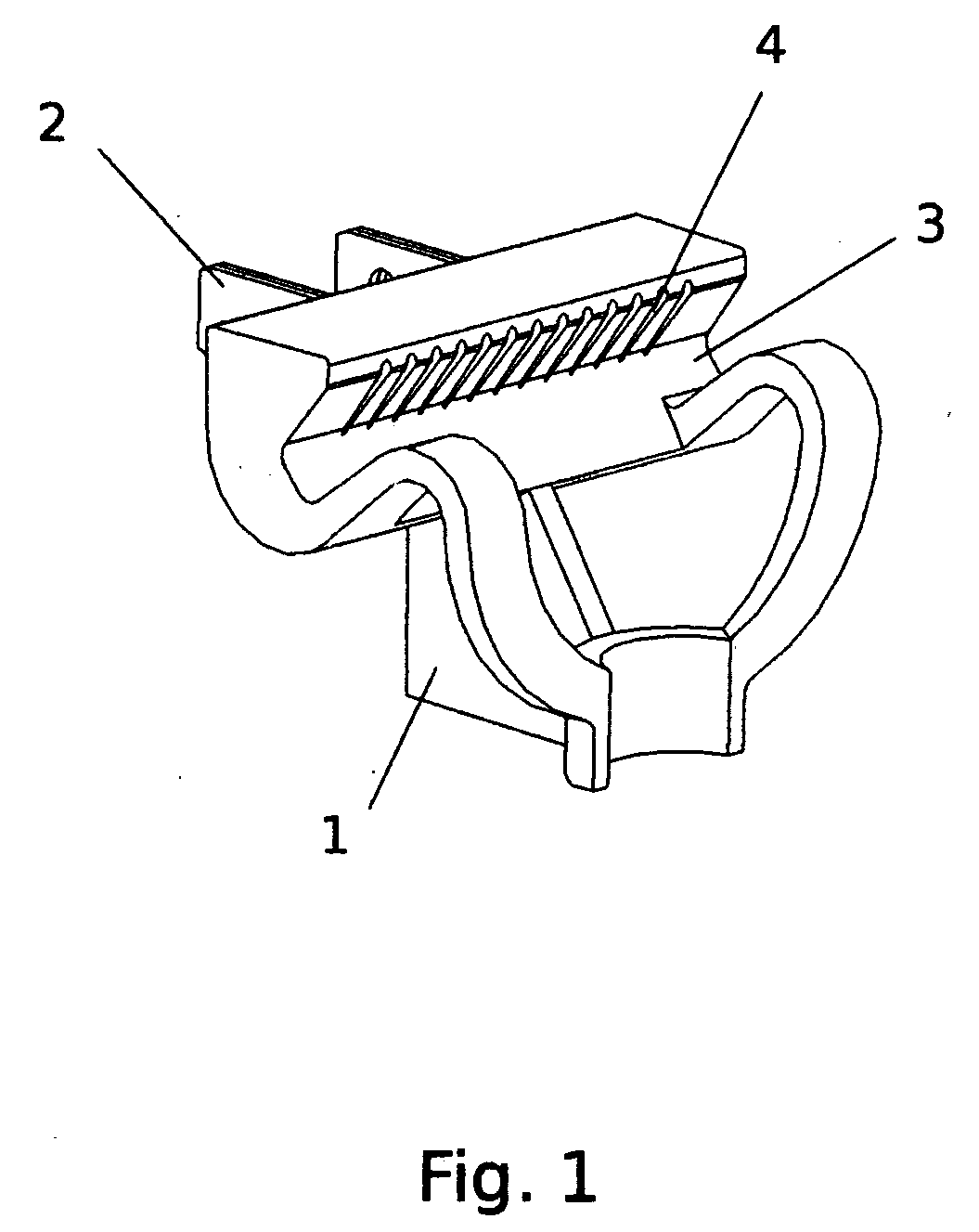Heat apparatus for extending the life of blade cutting edges
a technology of heat apparatus and blade, which is applied in the direction of electrical apparatus, ohmic-resistance heating, induction heating, etc., can solve the problems of corrosion, and reducing the effectiveness of blade sharpness
- Summary
- Abstract
- Description
- Claims
- Application Information
AI Technical Summary
Benefits of technology
Problems solved by technology
Method used
Image
Examples
Embodiment Construction
[0018]FIGS. 1 through 4 identify the preferred embodiments of the device and designate the device elements (1-8). In assembled form, the injection molded device housing, element (1), has a cradle, element (3) to hold a razor, element (7), FIG. 4. The device plugs into a standard 120VAC electrical wall outlet by means of twin metal prongs, elements (2), which connect to an electrical resistance-heating component, element (5) via electrical leads, elements (6), FIG. 3. The heat energy generated by this heating circuit raises the temperature of the housing in the area above the cradle, element (3), in vicinity to grooves, elements (4). The heat energy transfers to the blades in a razor's head, element (8), FIG. 4, by means of conduction, convection and radiation.
[0019] After use, water is present on the blades of a razor. Corrosion of the blades occurs with the presence of contact water and contributes to dulling of the blades. Raising the temperature of the contact water increases th...
PUM
 Login to View More
Login to View More Abstract
Description
Claims
Application Information
 Login to View More
Login to View More - R&D
- Intellectual Property
- Life Sciences
- Materials
- Tech Scout
- Unparalleled Data Quality
- Higher Quality Content
- 60% Fewer Hallucinations
Browse by: Latest US Patents, China's latest patents, Technical Efficacy Thesaurus, Application Domain, Technology Topic, Popular Technical Reports.
© 2025 PatSnap. All rights reserved.Legal|Privacy policy|Modern Slavery Act Transparency Statement|Sitemap|About US| Contact US: help@patsnap.com



